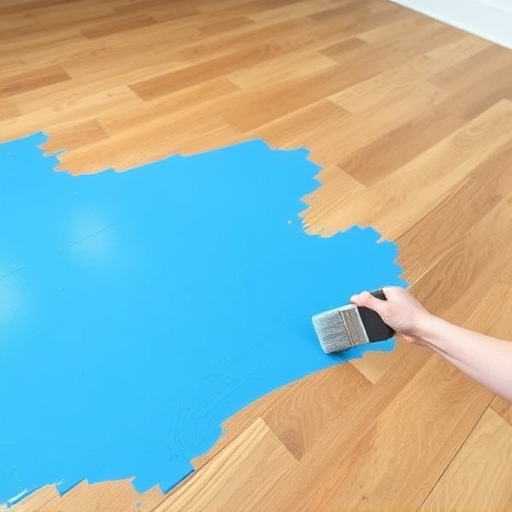How to Remove Paint From Hardwood Floors
Removing paint from hardwood floors can seem like a daunting task, but with the right techniques and tools, you can restore your floors to their original beauty. Whether you’re dealing with splatters from a recent DIY project or old paint stains from previous renovations, this guide will provide you with all the information you need to effectively remove paint from your hardwood floors.
Table of Contents
- [Understanding the Types of Paint](#understanding-the-types-of-paint)
- [Safety Precautions](#safety-precautions)
- [Tools and Materials Needed](#tools-and-materials-needed)
- [Methods for Removing Paint](#methods-for-removing-paint)
- [1. Scraping](#1-scraping)
- [2. Heat Gun](#2-heat-gun)
- [3. Chemical Paint Strippers](#3-chemical-paint-strippers)
- [4. Sanding](#4-sanding)
- [Aftercare for Hardwood Floors](#aftercare-for-hardwood-floors)
- [Frequently Asked Questions](#frequently-asked-questions)
- [Conclusion](#conclusion)
- Water-based: Easy to clean up with water while wet.
- Less harmful chemicals: Generally safer for indoor use.
- Solvent-based: Requires solvents for cleanup such as mineral spirits.
- More durable: Provides a tougher finish but is harder to remove.
- Ventilation: Ensure the area is well-ventilated, especially if using chemical strippers.
- Protective Gear: Wear gloves, goggles, and a mask to protect yourself from fumes and dust.
- Test Area: Always test your chosen method on a small, inconspicuous area to ensure it won’t damage the wood.
- Scraper or putty knife
- Heat gun
- Paint stripper
- Sandpaper or sanding machine
- Rags or paper towels
- Bucket of water (for latex paint)
- Wire brush
- Paintbrush (for applying strippers)
- Mineral spirits (for oil-based paint)
- Clean the Area: Wipe the floor with a damp cloth to remove any dust or residue.
- Refinish if Necessary: If the wood has been damaged, consider refinishing the area to restore its shine.
- Regular Maintenance: Use a wood floor cleaner to maintain the beauty of your hardwood floors.
Understanding the Types of Paint
Before you start the paint removal process, it’s essential to know the type of paint you are dealing with. There are two primary types of paint used on floors:
Latex Paint
Oil-Based Paint
Understanding the paint type will help you choose the most effective removal method.
Safety Precautions
Before you begin removing paint, it’s crucial to take some safety precautions:
Tools and Materials Needed
Depending on the method you choose, you may need different tools and materials. Here’s a basic list:
Common Tools
Optional Tools
Methods for Removing Paint
There are several effective methods for removing paint from hardwood floors. Here’s a detailed look at each method:
1. Scraping
Scraping is the most straightforward method and works best for small areas or drips of paint.
Steps:
1. Hold the scraper at a 45-degree angle to the floor.
2. Gently push the scraper under the paint to lift it off.
3. Be careful not to gouge the wood.
Pros and Cons:
| Pros | Cons |
|---|---|
| Simple and inexpensive | Time-consuming for large areas |
| No chemicals involved | May not remove all paint |
2. Heat Gun
A heat gun can effectively soften paint, making it easier to scrape off.
Steps:
1. Set the heat gun to a low setting.
2. Hold it a few inches away from the paint and move it back and forth.
3. Once the paint bubbles, use a scraper to lift it off.
Pros and Cons:
| Pros | Cons |
|---|---|
| Fast and effective | Risk of burning the wood |
| Works on multiple paint types | Requires careful handling |
3. Chemical Paint Strippers
Chemical strippers are powerful solutions that dissolve paint, making it easy to wipe off.
Steps:
1. Apply the paint stripper according to the manufacturer’s instructions.
2. Allow it to sit for the recommended time.
3. Use a scraper or cloth to remove the softened paint.
Pros and Cons:
| Pros | Cons |
|---|---|
| Effective on tough stains | Harsh chemicals may damage wood |
| Fast-acting | Requires safety precautions |
4. Sanding
Sanding is a more aggressive method but can effectively remove paint and restore the wood’s finish.
Steps:
1. Start with coarse sandpaper (60-grit) to remove paint.
2. Follow up with finer sandpaper (120-grit) to smooth the surface.
3. Vacuum or wipe down the area to remove dust.
Pros and Cons:
| Pros | Cons |
|---|---|
| Thorough paint removal | May alter the wood finish |
| Prepares wood for refinishing | Time-consuming and labor-intensive |
Aftercare for Hardwood Floors
Once you have successfully removed the paint, it’s vital to take care of your hardwood floors:
Frequently Asked Questions
Q1: Can I use vinegar to remove paint from hardwood floors?
A1: Vinegar is not typically effective for removing paint. It may help with cleaning but is not a strong enough solvent for paint removal.
Q2: How do I remove dried paint from hardwood floors?
A2: For dried paint, scraping, or using a heat gun or chemical stripper is recommended. Sanding can also be effective for stubborn stains.
Q3: Will removing paint damage my hardwood floors?
A3: If done carefully, removing paint should not damage your hardwood floors. However, aggressive methods like sanding can alter the finish, so proceed with caution.
Q4: How long does it take to remove paint from hardwood floors?
A4: The time required depends on the method used and the extent of the paint. Scraping small areas may take minutes, while sanding an entire room can take several hours.
Conclusion
Removing paint from hardwood floors can be a challenging task, but with the right approach and tools, it is entirely manageable. Whether you choose scraping, a heat gun, chemical strippers, or sanding, ensure you take the necessary precautions to protect your floors and yourself. By following this guide, you can successfully restore your hardwood floors and keep them looking beautiful for years to come.
Remember, patience is key, and always consider the type of paint and your floor’s condition before deciding on a removal method. Happy DIYing!

